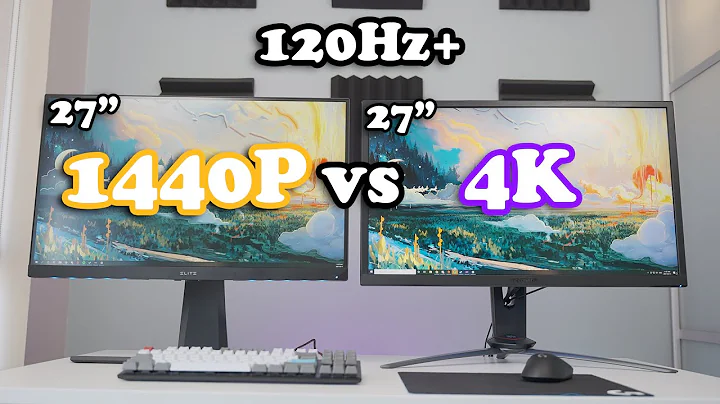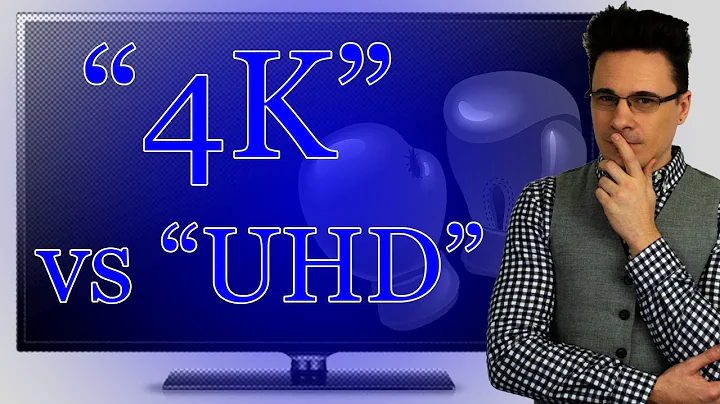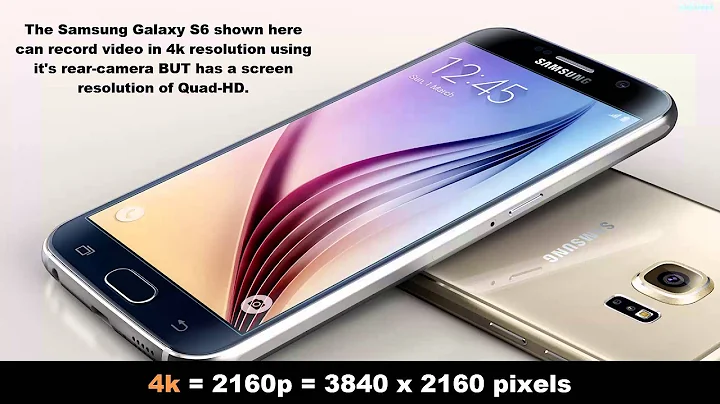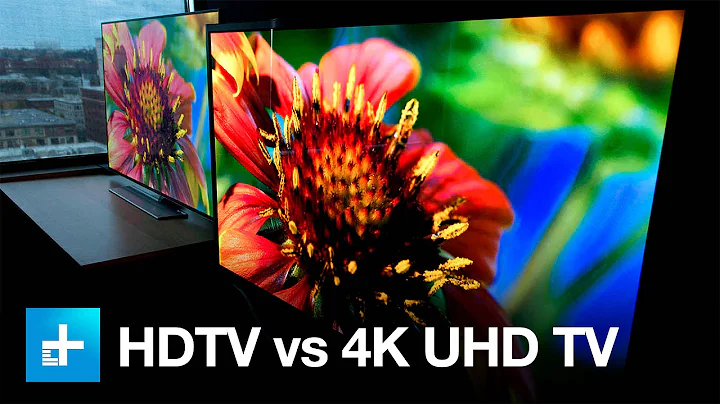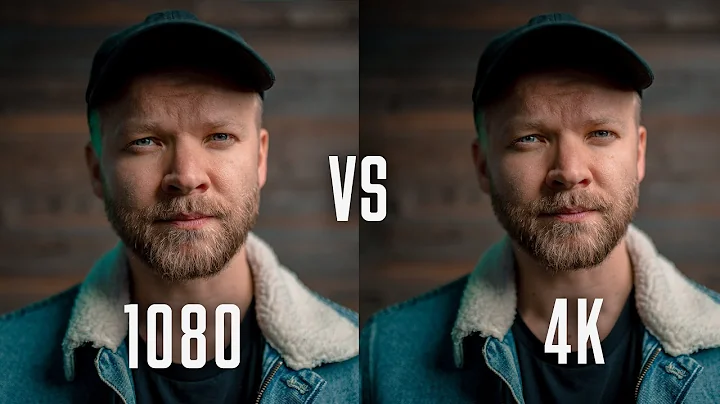What is the difference between 4K, UHD and QHD? Do we agree on one official resolution?
Solution 1
Shorter answer.
Do we agree on one official resolution?
No. Yes. Maybe. All depending on where and what context the “4K” designation is used.
On a basic technical level, “4K” is 4096 x 2160 and nothing else.
But thanks to competing manufacturers creating competing hardware for formats and media specs that are themselves competing against each other on another level, the whole meaning of “4K” has been bastardized to the point it’s no longer really a true consumer specification, less of an industry standard and even more of a conceptual headache than you can imagine.
So yes, it’s confusing. And confusing to the point that none of this is beneficial to the consumer in any way. More details below.
Longer answer.
What is 4K?
The 4K Wikipedia article basically states that “4K” is 4096 x 2160 and nothing else:
A 4K resolution, as defined by Digital Cinema Initiatives, is 4096 x 2160 pixels (256:135, approximately a 1.9:1 aspect ratio). This standard is widely respected by the film industry along with all other DCI standards.
What is UHD?
And then this explains what “UHD” is—3840 x 2160—and why the “4K” designation in this case doesn’t help anything; bold emphasis is mine:
DCI 4K should not be confused with ultra-high-definition television (UHDTV) AKA "UHD-1", which has a resolution of 3840 x 2160 (16:9, or approximately a 1.78:1 aspect ratio). Many manufacturers may advertise their products as UHD 4K, or simply 4K, when the term 4K is traditionally reserved for the cinematic, DCI resolution. This often causes great confusion among consumers.
Why isn’t 4K just called 2160p?
You ask this:
Also, on a sidenote, if 4K means 4xFullHD (2x1920 by 2x1080 => 3840x2160), shouldn't FullHD be called 2K?
You would think that. But then more clarification on where the mixup might have began from Wikipedia; again the bold emphasis is mine:
The use of width to characterize the overall resolution marks a switch from the previous generation, high definition television, which categorized media according to the vertical dimension instead, such as 720p or 1080p. Under the previous convention, a 4K UHDTV would be equivalent to 2160p.
So for 720p and 1080p that is defined by image height but “4K” is defined by its horizontal. So by old “standards” “4K” should then just be called 2160p.
What is QHD?
The switch in dimension measuring methodology pretty much opens up the door to anyone fudging “4K” to using it for defining items that are not “4K” in the defined sense. For example, here is some info from the Wikipedia entry on “QHD”; once again bold emphasis is mine:
QHD (Quad HD), also sometimes advertised as WQHD due to its widescreen shape, or 1440p, is a display resolution of 2560x1440 pixels in a 16:9 aspect ratio. It has four times as many pixels as the 720p HDTV video standard, hence the name.
So that explains that. QHD is “4K” in the sense that it has four times as many pixels as the 720p HDTV video standard. But in this case, “4K” most likely just should be “4X” (aka: Quad (4) times normal HD size).
What is this nonsense?
Is it that 4K is not defined correctly, did the technology grow independent from the naming conventions, or do the advertising companies just refuse to burden the customers with correct informations?
That is an open-ended question, but I don’t believe the issue is advertising refusing to burden consumers with information they can’t handle. Rather—if you ask me—companies are just taking advantage of the non-enforced concept of a “standard” to confuse consumers into thinking they are getting what they are not getting.
It’s just classic sales smoke and mirrors. Not as bad as CPU Mhz/Ghz speed confusion—compounded by multiple core CPUs—in the PC world, but maybe worse. If you are old enough all of these mixed and deceptive uses of terminology just can make you wistful for the days of simple, 20” CRT TVs with a modest remote control.
But wait! There’s more… Nobody can agree on 4K DRM standards!
Reading this article explains that a lot of the 4K nonsense can be traced back to DRM schemes and some companies/formats are fighting over and how streaming 4K video versus 4K physical media might contain different, competing DRM schemes which will essential creating even more 4K media variants:
In short, it’s starting to look like there could be multiple DRM systems in the market for physical media and downloadable 4K content, with different major studios making their content available on some but not others. That could be more than enough to turn consumers off to 4K content in downloadable or physical form.
Related addendum: DVD+R (plus) versus DVD-R (minus) nonsense.
And an aside, but if you remember when DVD-R’s first came out, they were just basically “DVD [dash] R’s.” But then DVD+R’s came around—as a competing recordable DVD format—the “+” resulted in some creative marketing nonsense. Such as where DVD+R media was considered superior to DVD-R because one was a “DVD [plus] R” type of media and the other (by implication) was “DVD [minus] R” and who wants to have the “minus” media when “plus” media is out there? You want “the best” right? So be positive! Get the “plus.” This kind of format branding manipulation nonsense never ends.
PS: And when the dust settled from the DVD-R/DVD+R nonsense, we ended up with the DVD±R (plus/minus) designation for DVD readers/writers so they could read and write to DVD-R media as well as DVD+R media. The fun never stops!
Solution 2
JakeGould is correct, but stated briefly from common usage (among people not lying):
4k is ambiguous and may refer to 3840 x 2160 or 4096 x 2160, or potentially others.
UHD (in this context) refers to 3840 x 2160 and nothing else. This resolution may be called 4k.
QHD refers to 2560 x 1440. Wider versions, such as 3440 x 1440, may be called Ultra-wide UHD. Neither UHD nor 4k are appropriate names for these resolutions.
2560 x 1600 is called WQXGA. Neither UHD nor 4k are appropriate names for this resolution.
There is some, but not very much ambiguity in the terms. But as you have found, people lie (or make mistakes).
Related videos on Youtube
KarmaEDV
I've been a Consultant, I've been consulted. I've worked on my own, I've worked for others. I've loved it, I've hated it. But I always got back to programming!
Updated on September 18, 2022Comments
-
 KarmaEDV over 1 year
KarmaEDV over 1 yearNowadays it seems that Full HD isn’t enough anymore and the terms “4K,” “QHD” and “UHD” are thrown around interchangeably.
At the same time, there is not just one “4K” resolution in the catalogs. I have seen resolutions such as 2560 x 1600, 3440 x 1440, 3840 x 2160, 4096 x 2160 being advertised as 4K. But it can’t all be 4K, right?
Is this because 4K is not defined correctly, did the technology grow independent from the naming conventions, or do the advertising companies just refuse to burden the customers with correct information?
Also, on a sidenote, if 4K means 4xFullHD (2 x 1920 by 2 x 1080 => 3840 x 2160), shouldn't FullHD be called 2K?
-
 Tetsujin over 8 yearsHD always meant, in marketing terms, "anything bigger than SD". I don't see the marketing boys taking a back seat this time either ;)
Tetsujin over 8 yearsHD always meant, in marketing terms, "anything bigger than SD". I don't see the marketing boys taking a back seat this time either ;) -
 Ben Voigt over 8 yearsOf those, only the last two are reasonably called "4K". If I saw an Amazon affiliate advertising QHD or WQXGA (2560 by 1440p or 1600p, respectively) as "4K", I'd be writing Amazon to have that product page corrected or taken down. Do note that 2560x1440 actually is 4 megapixels, despite not being 4K.
Ben Voigt over 8 yearsOf those, only the last two are reasonably called "4K". If I saw an Amazon affiliate advertising QHD or WQXGA (2560 by 1440p or 1600p, respectively) as "4K", I'd be writing Amazon to have that product page corrected or taken down. Do note that 2560x1440 actually is 4 megapixels, despite not being 4K. -
 Tony Stewart EE75 about 6 yearsAnd then the camera market avoided this all together and used megapixels created their own conundrum by increasing effective megapixels by dithering.
Tony Stewart EE75 about 6 yearsAnd then the camera market avoided this all together and used megapixels created their own conundrum by increasing effective megapixels by dithering.
-
-
 IMSoP over 8 yearsThe vertical resolution was used for 720i/p and 1080i/p because they were replacing analogue formats, which technically had no fixed horizontal resolution - the signal was continuous on each of the transmitted lines, even if it was then digitised for display on an LED-based screen. UK "SD" TV, for instance, was technically 576i (625 lines, but not all carrying picture), and this was what "HD" was being compared to. Now that we're all accustomed to digital TV and video, they can switch to the horizontal number, which is much larger, particularly when widescreen aspect ratios are also assumed.
IMSoP over 8 yearsThe vertical resolution was used for 720i/p and 1080i/p because they were replacing analogue formats, which technically had no fixed horizontal resolution - the signal was continuous on each of the transmitted lines, even if it was then digitised for display on an LED-based screen. UK "SD" TV, for instance, was technically 576i (625 lines, but not all carrying picture), and this was what "HD" was being compared to. Now that we're all accustomed to digital TV and video, they can switch to the horizontal number, which is much larger, particularly when widescreen aspect ratios are also assumed. -
gaborous over 8 yearsAbout DVD+R vs DVD-R, it's not only about branding, it was also a specification of the norm and technologies for burning data. In particular, DVD+R method should be more robust against errors and has better error management. DVD±R is a specification only given to DVD burners (meaning that it can burn both DVD+R and DVD-R), whereas DVD+R and DVD-R are specifications for the DVD discs.
-
Daniel Kamil Kozar over 8 yearsThere's an old MyCE article that talks about the (very) low-level differences between DVD+ and -R(W). I don't have enough knowledge to draw any conclusions myself, but the author ends by saying that +R is somehow "better".
-
AJ Henderson about 8 yearsIt is worth pointing out that 4k isn't really a change of standard, just a change of standard used in the consumer market. 2k video was the standard used in professional markets during the last generation and was helpful for distinguishing between the professional 2k resolution and the consumer 1080p. It kind of makes sense that things switched since we've moved away from interlaced processing now, so the emphasis on vertical lines no longer really makes sense in the consumer market. Unfortunately, lack of standardization resulted in fracturing the "4k" name in to multiple lay meanings.
-
 klaar almost 8 yearsI must disagree on what it is that you call QHD: HD is 1280x720 and Q(uad)HD is 2x1280 x 2x720, which is 2560x1440, thus 2560x1440 is QHD. The resolution 3440x1440 is the 21:9-version of QHD which is 16:9 just like HD, FHD and UHD. Also 4k should not be ambiguous: DCI-4k is the cinema projection standard and is 4096x2160, whilst UHD(-1) is the display standard and is 3840x2160 and is effectively Q(uad)FHD, because FHD is 1920x1080 and QFHD is 2x1920 x 2x1080 = 3840x2160. Only silly marketeers from display manufacturers decided to call their UHD screens "4k", but that's (f)actually erroneous.
klaar almost 8 yearsI must disagree on what it is that you call QHD: HD is 1280x720 and Q(uad)HD is 2x1280 x 2x720, which is 2560x1440, thus 2560x1440 is QHD. The resolution 3440x1440 is the 21:9-version of QHD which is 16:9 just like HD, FHD and UHD. Also 4k should not be ambiguous: DCI-4k is the cinema projection standard and is 4096x2160, whilst UHD(-1) is the display standard and is 3840x2160 and is effectively Q(uad)FHD, because FHD is 1920x1080 and QFHD is 2x1920 x 2x1080 = 3840x2160. Only silly marketeers from display manufacturers decided to call their UHD screens "4k", but that's (f)actually erroneous. -
 klaar almost 8 yearsIn fact what you call QHD is actually called "Ultra-Wide QHD" by display manufacturers. Regular QHD is still just the 16:9 resolution.
klaar almost 8 yearsIn fact what you call QHD is actually called "Ultra-Wide QHD" by display manufacturers. Regular QHD is still just the 16:9 resolution. -
Vector almost 8 years@klaar You're absolutely right about QHD. Thanks for catching my mistake, I've updated the answer. Regarding whether UHD is in fact 4k, I agree technically it's not "really" 4k, but factual or not, it is in common usage, which is what I am aiming to describe. Thanks for your comments.
-
EntangledLoops about 6 yearsI wish you were right about QHD, but take a look here for a counter-example: asus.com/us/Monitors/ROG-SWIFT-PG348Q
-
Vector about 6 years@EntangledLoops "QHD" and "Ultra-wide QHD" are not the same. This is not the first time people (including me) have made an error in the distinction (see previous comments), so I'll see if I can clarify the answer.
-
 Tony Stewart EE75 almost 6 yearsThey could have used megapixels like cameras instead with aspect ratio, frame rate and max pixel rate , or bit rate depending on interfaces.
Tony Stewart EE75 almost 6 yearsThey could have used megapixels like cameras instead with aspect ratio, frame rate and max pixel rate , or bit rate depending on interfaces.
